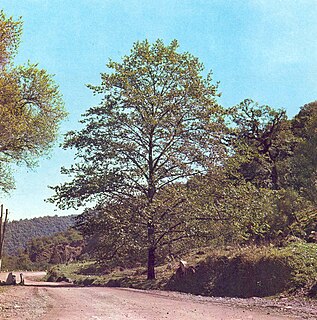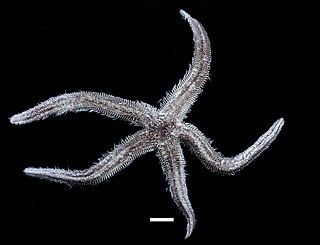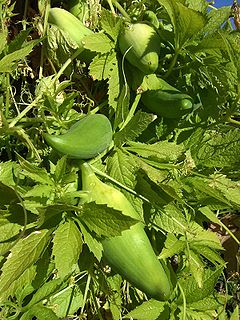Related Research Articles

Santa Marta, officially Distrito Turístico, Cultural e Histórico de Santa Marta, is a city of half a million people, in the nation of Colombia. It is the capital of Magdalena Department and the fourth-largest urban city of the Caribbean Region of Colombia, after Barranquilla, Cartagena, and Soledad. Founded on July 29, 1525, by the Spanish conqueror Rodrigo de Bastidas, it was the first Spanish settlement in Colombia, its oldest surviving city, and second oldest in South America. This city is situated on a bay by the same name and as such, it is a prime tourist destination in the Caribbean region.

Villavicencio is a city and municipality in Colombia. Capital of Meta Department, it was founded on April 6, 1840. The city had an urban population of approximately 531,275 inhabitants in 2018. The city is located at 4°08'N, 73°40'W, 75 km southeast of the Colombian capital city of Bogotá (DC) by the Guatiquía River. It is the most important commercial center in the Llanos Orientales. It has a warm and humid climate, with average daily temperatures ranging from 21 °C to 30 °C.2 It is affectionately called "Villavo" la bella.

Ibagué is the capital of Tolima, one of the 32 departments that make up the Republic of Colombia. The city is located in the center of the country, on the central mountain range of the Colombian Andes, near Nevado del Tolima. It is one of the most populous cities in the country, with about 529,635 inhabitants, making it the seventh (7th) most populous in Colombia. It was founded on October 14, 1550, by the Spanish captain Andrés López de Galarza. The city of Ibagué is divided into 13 communes and the rural area has 17 corregimientos. As the capital of the department of Tolima the city hosts the Government of Tolima, the Departmental Assembly, and the Attorney General's Office. It is the main epicenter of political, economic, administrative, business, art, culture, and tourism activities in the area.

Yukpa is an Amerindian ethnic group that inhabits the northeastern part of the Cesar Department in northern Colombia by the Serranía del Perijá bordering Venezuela. Their territory covers the eastern areas of the municipalities of Robles La Paz, Codazzi and Becerril in Resguardos named Socorpa, Menkue, El Cozo Iroka and some other small areas in Venezuela. According to an Inter Press Service story, the majority of the Yukpa, who number nearly 10,000, live in Venezuela although some communities are still located in the mountains across the border in Colombia. The Yukpa people have been known to consume certain nest-inhabiting wasp species, such as Polistes pacificus, which make paper nests that can be quickly knocked from its hanging place on a tree directly into a fire, where the larvae are then toasted.

Girardot is a municipality and town of Colombia in the department of Cundinamarca. It is the second most important city of Cundinamarca according to its production. It is home to a number of recreational and vacational spots, mainly visited by people from Bogotá, as it is located at two hours drive from the city but enjoys a tropical climate.

Alnus acuminata is a species of deciduous tree in the Betulaceae family. It is found in montane forests from central Mexico to Argentina.

The Tayrona National Natural Park is a protected area in the Colombian northern Caribbean region and within the jurisdiction of the city of Santa Marta, 34 kilometres (21 mi) from the city centre. The park presents a biodiversity endemic to the area of the Sierra Nevada de Santa Marta mountain range, featuring a variety of climates and geography that ranges from arid sea level to 900 meters above sea level. The park covers approximately 30 square kilometres (12 sq mi) of maritime area in the Caribbean sea and approximately 150 square kilometres (58 sq mi) of land.

The Institute of Hydrology, Meteorology and Environmental Studies, also known by its acronym in Spanish, IDEAM, is a government agency of the Ministry of Environment and Sustainable Development of Colombia. It is in charge of producing and managing the scientific and technical information on the environment of Colombia, and its territorial composition. The IDEAM also serves as the Colombian institute of meteorology and studies the climate of Colombia. The agency is currently led by the Director General, forestry engineer Yolanda González Hernandez. González Hernández is a specialist in Geographic Information Systems with a Masters in Meteorology Sciences from the National University of Colombia, and is the first woman to lead the agency.

Panamanian Spanish is the Spanish (Castilian) language as spoken in the country of Panama. It is closely related to other varieties of Caribbean Spanish.

Fernaldia is a genus of flowering plants in the family Apocynaceae, first described as a genus in 1932. It is native to Mexico and Central America.

Cyprididae is "the most diverse group of freshwater ostracods". It contains 1000 species, which represents 50% of the known species of freshwater ostracods. Around 60% of genera in the family are endemic to a single zoogeographic region. The family contains 25 subfamilies, and is most diverse in the Afrotropical realm, with over 300 species in 45 genera. Many Cyprididae occur in temporary water bodies and have drought-resistant eggs, mixed/parthenogenetic reproduction and ability to swim. These biological attributes pre-adapt them to form successful radiations in these habitats. Bennelongia is an interesting genus of the family Cyprididae. It may be the last true descendant genus of the Mesozoic lineage of Cypridea, which was a dominant lineage of ostracod in non-marine waters in the Cretaceous.

Luidia superba is a tropical species of starfish in the family Luidiidae. A single specimen was found off the Pacific coast of Colombia in 1888; the species has since been found in the Galapagos Islands. It is endemic to this area and has not been recorded elsewhere.
Guatteria chiriquensis is a tree species belonging to the Annonaceae family. It ranges from the central and southern Pacific slopes of Costa Rica to western Panama.

Liborio Zerda was a Colombian physician and Muisca scholar. Zerda has been important in the natural sciences of the late 19th and early 20th century in Colombia, publishing many articles about various topics, from medicine to chemical analysis, radioactivity and the popular drink chicha.

Marianne Vere Cardale de Schrimpff is a Colombian anthropologist, archaeologist, academic and writer.

Cyclanthera is a genus of flowering plants in the family Cucurbitaceae. The name comes from the fact that some species show extreme cases of stamen fusion forming a ring around the gynoecium, with a single locule.
Cypricercus elegans is a species of freshwater ostracod in the family Cyprididae. It is found in Colombia.
Chlamydotheca is a genus of freshwater ostracods in the family Cyprididae. About 36 species are known to occur throughout continental waters. Four species are found in Argentina.

Gryllotalpa septemdecimchromosomica is a species of mole cricket, in the G. gryllotalpa species group, found in Spain and France: where it may be known as le courtillière Provençale. No subspecies are listed in the Catalogue of Life.

Xeroplexa setubalensis is a species of air-breathing land snail, a terrestrial pulmonate gastropod mollusk in the family Geomitridae. This species is endemic to Portugal. The taxa was previously placed within the genus Candidula until a molecular phylogenetic study revealed its current status. This taxon is the type species of the genus Xeroplexa.
References
- ↑ ESTUDIOS TAXONOMICOS, ONTOGENETICOS, ECOLOGICOS Y ETOLOGICOS SOBRE LOS OSTRACODOS DE AGUA DULCE EN COLOMBIA—V: ESTUDIO TAXONOMICO DEL GENERO CHLAMYDOTHECA SAUSSURE, 1858 (OSTRACODA, PODOCOPIDA, CYPRIDIDAE): Parte III. el grupo chlamydotheca iheringi (sars, 1901). Ewald W. Roessler, 1986, Caldasia, 14, (68-70), pages 617-650 (Preview at jstor, article at bdigital.unal.edu.co)